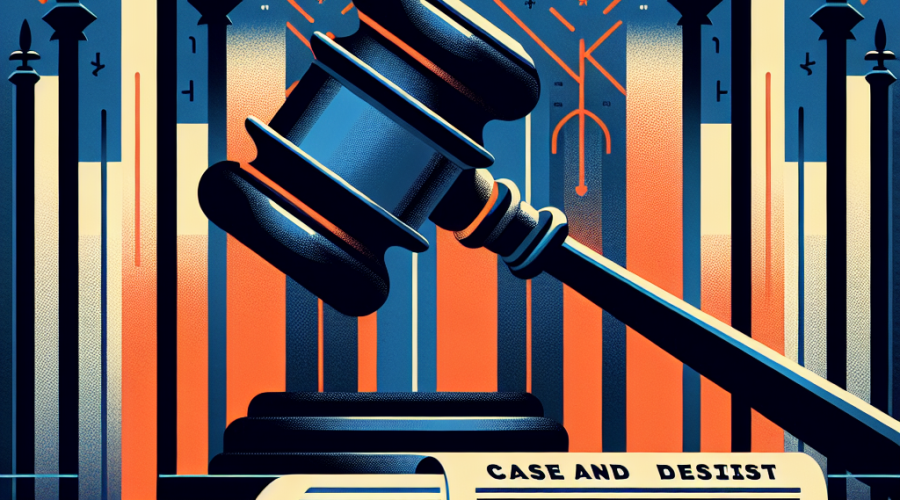Ethereum’s co-founder Vitalik Buterin has once again ignited the debate around decentralization in the cryptocurrency space, using the backdrop of the recent collapse of FTX to highlight the fundamental strengths of blockchain-based systems such as Ethereum. Speaking at the Ethereum Devconnect conference in Argentina, Buterin offered a candid critique of FTX’s approaches, underlining the essential differences between centralized platforms and decentralized protocols. The dramatic fall of FTX—a centralized crypto exchange previously regarded as one of the industry’s giants—has served as a cautionary tale for investors, developers, and regulators worldwide.
The Collapse of FTX: A Case Study in Centralized Failure
At the heart of Buterin’s speech was a pointed analysis of FTX’s business model. FTX, which was once one of the most powerful crypto trading platforms, collapsed in 2022, shocking the digital asset industry and leading to billions in lost investor funds. The core issue, according to Buterin, was the exchange’s deeply centralized structure. FTX was built and operated by a tight-knit group of founders and executives, with decisions made behind closed doors and with little public transparency into its financials or order books.
Since FTX operated as a private entity, individual and institutional users had little choice but to trust the company’s leadership—trust that was ultimately betrayed when it became clear that customer funds had been mismanaged. Buterin pointed out that this “blind trust” is antithetical to the original vision of cryptocurrencies, which seek to create systems that can be relied upon without placing faith in individual actors or companies.
Buterin succinctly summarized this difference: “FTX was a perfect example of what you get if you take Ethereum’s principles and rotate them 180 degrees.” In other words, whereas Ethereum was built as a decentralized, transparent, and community-driven ecosystem, FTX embodied the risks of centralization—single points of failure, opaqueness, and a fragile trust system vulnerable to human error and malfeasance.
Decentralization: The Strength of Ethereum
Buterin underscored decentralization as the cornerstone of Ethereum’s architecture and guiding philosophy. Rather than relying on a central authority, Ethereum is an open-source network maintained by thousands of independent nodes worldwide. The development of its protocol is open to anyone’s input, with code changes and upgrades subject to extensive discussion, peer review, and public scrutiny through proposals called Ethereum Improvement Proposals (EIPs).
This model fosters an unprecedented level of resilience. No single entity controls Ethereum. Decisions regarding its future are made by a global community of developers, researchers, miners, node operators, and users. When security flaws or bugs are discovered, the process to identify solutions is transparent and collective, reducing the risk of catastrophic failures linked to the decisions or actions of a single team or executive.
Buterin emphasized that this transparency and collective stewardship significantly reduce the risk of the community being blindsided by fraud or mismanagement, like what occurred with FTX. It stands in sharp contrast to central exchanges, where critical business and technical decisions can often be obscured from customers and even major investors.
Community-Led Evolution vs. Corporate Control
A major focal point in Buterin’s critique was the stark contrast between the Ethereum ecosystem and the corporate structure of FTX. While FTX operated in many ways like a traditional centralized business, with a CEO and close-knit executive circle, Ethereum exists primarily as a protocol and a network effect—a digital commons where anyone with the skills and desire can contribute code, research, or governance insights.
Buterin described Ethereum as “not just a technology but a community,” underscoring how its strength comes from its vast, diverse, and engaged base of supporters. This is not mere rhetoric: Ethereum boasts one of the largest and most active developer communities in blockchain technology, with tens of thousands of independent contributors from every corner of the globe.
Each step in Ethereum’s ongoing evolution—such as the network’s major “Merge” upgrade to proof-of-stake—is the product of open collaboration, negotiation, and consensus-building. This process can be slow and sometimes messy, but it significantly reduces the risk that individual leaders can act against the interests of users or the broader ecosystem. By contrast, FTX’s corporate model centralized power and control to a dangerous degree, putting users’ assets and even the future of the company at the mercy of a small, unchecked leadership group.
The Consequences of Centralization: Lessons from FTX
The downfall of FTX was not an isolated event; it was the culmination of structural vulnerabilities common to many centralized projects in the crypto space. Without enforced transparency and decentralized oversight, such exchanges can—and sometimes do—operate in ways that expose their users to unacceptable risks.
Buterin’s comments at Devconnect Argentina come at a time of ongoing fallout from the FTX scandal. The exchange’s insolvency left users facing complex and lengthy bankruptcy proceedings, with billions of dollars in assets missing. In the wake of the crisis, other centralized exchanges have rushed to publish “proof of reserves” to reassure customers, but questions persist over the verifiability and sufficiency of these disclosures.
This collapse followed a familiar pattern in which centralized exchanges can become overleveraged, mismanage funds, or fall victim to security breaches. Because control is usually concentrated among a few executives, there are often insufficient checks and balances in place to prevent reckless actions, self-dealing, or outright fraud.
The Rise of Decentralized Exchanges and Community Trust
The repercussions of FTX’s collapse have extended far beyond the company’s immediate users. Confidence in centralized exchanges has been badly shaken, driving a significant shift in user behavior. Buterin highlighted that the community’s growing distrust in centralized custodians has led to the rapid growth of decentralized exchanges (DEXs) and self-custody wallets.
Unlike centralized exchanges, DEXs like Uniswap and Curve do not require users to surrender control of their crypto assets to a third party. Trades are executed directly on the blockchain through smart contracts, which are open source and auditable by anyone. This radically improves transparency and security, allowing users to verify that their funds are safe and that trades are being executed as intended.
The switch to decentralized trading platforms marks a significant realignment of values in the industry, returning to crypto’s original ethos of “don’t trust, verify.” Many leaders, developers, and investors now advocate for DeFi (decentralized finance) applications that place users in control of their own assets, participation, and decision-making processes.
This movement isn’t just theoretical. Following the FTX debacle, a surge of traders and investors turned to DEXs, leading to record volumes and a wave of innovation in decentralized trading technologies. New DeFi protocols have sprung up to fill the trust gap left by failed centralized players, enabling a broad range of financial activities—swapping, lending, borrowing, derivatives trading—without ever requiring users to relinquish control over their keys.
The Future of Trust in Crypto: Transparency and Resilience
Buterin’s warnings about centralization resonate across the current landscape of crypto regulation and development. With calls for tighter compliance, audits, and oversight intensifying worldwide in the wake of FTX, Buterin and many in the Ethereum community argue that real protection comes not from more bureaucracy, but from protocols architected for openness and community control from the ground up.
The Ethereum founder’s vision is clear: decentralization is more than technical jargon—it’s a core principle that offers tangible security benefits for users and long-term resilience for the ecosystem. By moving away from centralized control, Ethereum and protocols like it create systems that are inherently more difficult to corrupt, defraud, or manipulate.
The decentralized ethos offers several other benefits, too. Protocols can be more resistant to government censorship or coercion. Innovation proceeds rapidly because anyone can propose new features, and competition is open. Users gain financial sovereignty, maintaining control of their assets without relying on large corporations or institutions that may not have their best interests at heart.
Conclusion: The Decentralization Imperative
The collapse of FTX stands as a powerful example of the risks inherent in centralized crypto models. Vitalik Buterin’s critique at Devconnect Argentina makes the case that the Ethereum approach—decentralized, community-driven, and transparent—is not only philosophically superior but practically safer for the growing millions of individuals who participate in the digital asset economy. As the industry continues to evolve, it’s clear that the lessons of FTX will inform decisions for years to come, pushing more developers, investors, and users toward systems designed with transparency, collective oversight, and resilience at their core. In the wake of past failures, the demand for decentralization has never been clearer or more urgent.
















